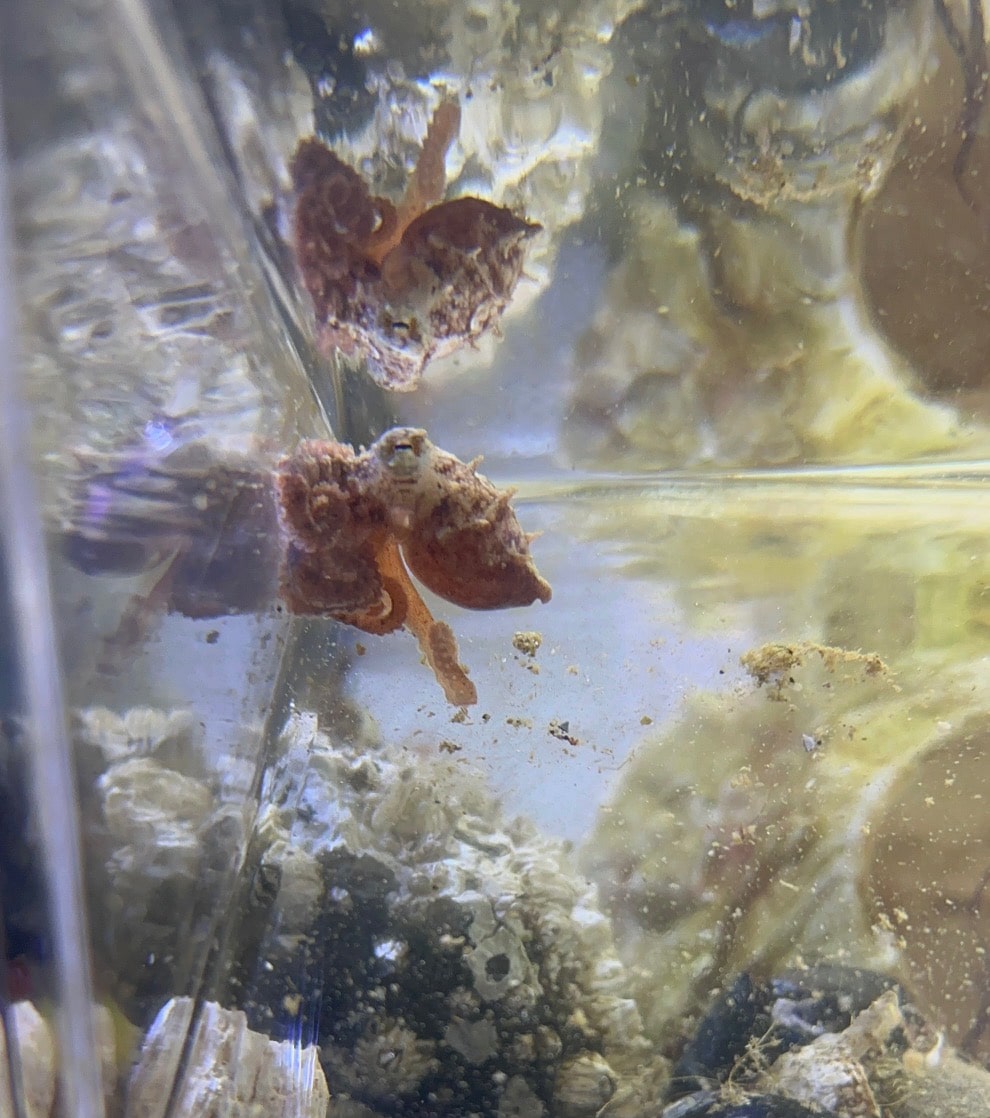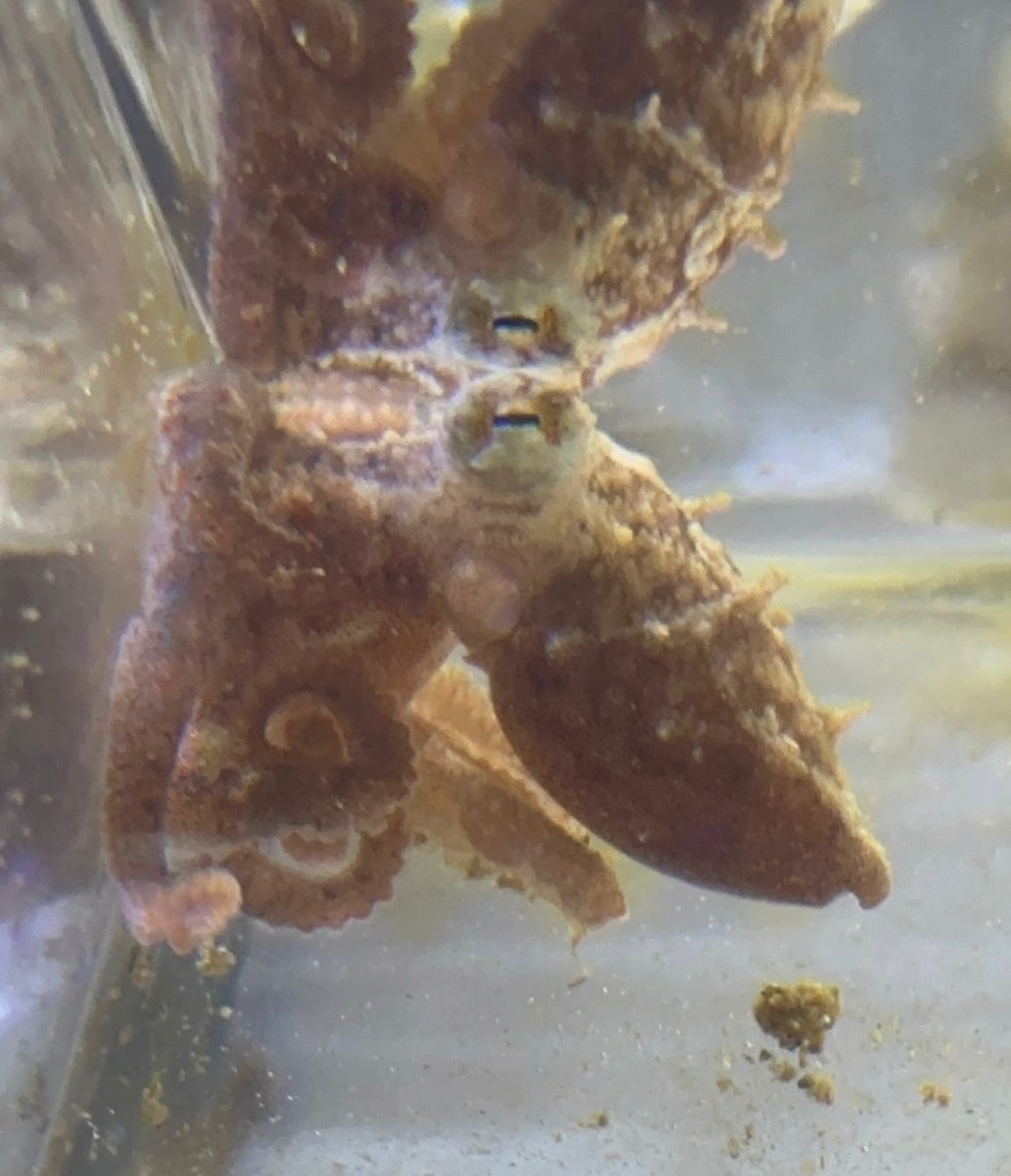Community Education Environment
Meet Roomba, Harbor WildWatch’s new Pacific red octopus
She’s new in town, and she enjoys going out at night. She dines on mussels, which are her favorite, though she also enjoys salmon. She’s tiny and doesn’t like sharing her space with others.
Education Sponsor
Education stories are made possible in part by Tacoma Community College, a proud sponsor of Gig Harbor Now.
Roomba is a Pacific red octopus about the size of a large grape. Staff at the Marine Science and Technology Center at Highline College found her during a beach cleanup on Redondo Beach in Des Moines.
Since they already housed a Giant Pacific octopus, and octopi prefer to be solitary, the center asked Harbor WildWatch if they wanted her. Rachel Easton, education director for HWW, said she was excited to have another octopus for the nonprofit’s downtown Marine Life Center.

Roomba, Harbor WildWatch’s new Pacific red octopus, will live in a small tank at the Marine Life Center for now. When she grows a little bigger she will be transferred to a larger tank in the center, and staff hope to have her there until she shows signs that she is ready to lay eggs. Photo courtesy of Rachel Easton, education director for HWW
HWW’s third octopus
“This is our third octopus,” Easton said. “We got Pancake in February last year, and she was released in June, and we got Huckleberry in September, and she was released just before Christmas.”
HWW has a scientific collection permit through the Washington Department of Fish and Wildlife that allows for collecting certain species, Easton said. They must follow strict guidelines in caring for the critters.
When the octopi begin to show signs of changed behavior, usually meaning that they are ready to lay eggs, Easton said the center releases them back into the wild. That gives the octopus’s eggs the best chance of a positive outcome.
Visitors to the Marine Life Center may be able to spot Roomba in her tank, but it isn’t guaranteed.
“Each one has its own personality, so some are more shy, and only come out at night or to feed,” she said. “Others, like Pancake, come out during the day.”
Giant cousins
Pacific red octopus like Roomba live in the waters between the southern Gulf of California to the Gulf of Alaska. They are a cousin to the Giant Pacific octopus and are common throughout the Salish Sea, Easton said.
Sometimes people can see a red octopus along the shore at low tide. They are common in the Salish Sea. They live about two years and grow to about 20 inches in length, she said.
Roomba is so small, Easton installed small screens so the tank’s filter system doesn’t suck her in. Once she’s big enough, Harbor Wild Watch will move her into a larger, 65-gallon aquarium tank at the center.
If she needs to be released back into the wild for any reason, Easton said that she will be transferred back to Redondo Beach, where she was found. With the help of Highline College’s MaST, they will take Roomba out into deeper waters to avoid predators that may be lying in wait at the shoreline, and release her with her den.

Harbor WildWatch’s downtown Marine Life Center has a new Pacific red octopus. Visitors may get a chance to see the tiny, grape-sized octopus, however, octopi are nocturnal animals, and each one has its own personality. Photo courtesy of Rachel Easton, education director of HWW.
“This will give her the best chance of survival,” Easton said. “When Huckleberry was released, she was released with her favorite den.”
For now, Roomba lives in a large barnacle inside her small tank. Visitors may quietly attempt to view her, and learn more about the Pacific red octopus.
For more information, visit harborwildwatch.org, or call 253-514-0187. Harbor WildWatch is open from 11 a.m. to 6 p.m. Wednesday through Sunday at 3207 Harborview Drive, adjacent to Skansie Brothers Park.

